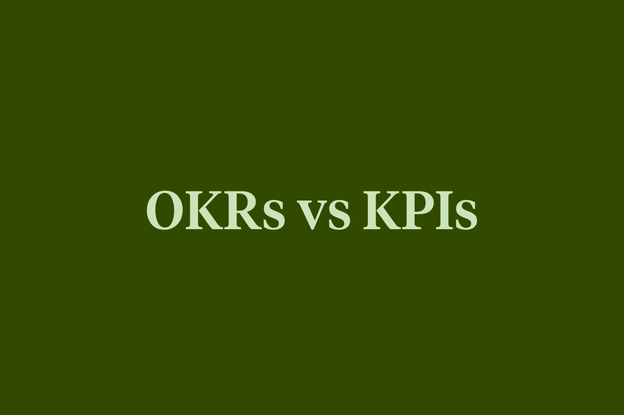3 ways employers can help over 55's flourish in the workplace

Generational divides make for easy headlines. A cocktail of societal trends (including shrinking populations, longer lives, and delayed pension access) means the look and feel of the workforce are changing.
In Europe, baby boomers are set to constitute a larger proportion of employees than ever before. As an employer, the changing workforce will have significant implications for your employee experience and engagement strategy. There will be challenges involved, but huge opportunities, too.
This article explains what “the boomer boom” may mean for your organization. We discuss how the engagement drivers for over-55s differ from those of younger cohorts, and showcase three things you can do to help older employees thrive (and deliver new kinds of value) in a multigenerational workforce.
Rise of the baby boomer
Even the youngest baby boomers (born between 1946 - 1964) are approaching retirement age. But their presence in the workforce, proportional to younger employees, is surging. Between 2010 and 2019, the number of workers in Europe aged 50+ climbed by almost one-third according to Deloitte. Several external factors are driving this trend:
- People are living longer and retiring later.
- Multiple economic setbacks (a recession, a housing crisis, and a pandemic) saw a shrinking market prioritize jobs for the most skilled and experienced workers (i.e., many baby boomers).
- European workers have seen a switch from defined benefit to defined contribution pensions, as well as delayed access to state pensions.
Ageism remains a barrier for older adults across industries, but employers have begun to recognize the advantages of retaining baby boomers.
And why wouldn’t they? In an uncertain job market, organizations are reducing entry-level hires in favor of the safe, known quality of existing employees. Older employees typically have more experience and a proven track record of delivering value to their companies. In this context, the staying power of boomers makes sense. It also triggers an additional question. How can organizations help over-55s flourish in a generationally diverse workforce?
3 ways to cultivate a workplace inclusive of older workers
1) Provide flexibility
Today’s employers face plenty of challenges. The Great Resignation, hybrid working, and improving employee engagement all raise tricky, connected questions. Answering them, as many culture-first companies have realized, requires flexibility.
Jabra surveyed over 5,000 knowledge workers in various countries including the UK, France, and Germany. It found that 75% of workers want the flexibility to work from anywhere in the future. For 59%, this flexibility was more important than salary or other benefits.
Crucially, flexible working is just one part of a wider best practice. Real flexibility is about meeting every employee on their own terms – and baby boomers value this just as much as their younger colleagues, even if their reasons are different. Older employees often prioritize time with grandchildren, elderly parents, or other family members. They may also feel less inclined to commute long distances, making the ability to work from home a huge plus.
For example, over-55s who are currently employed sometimes view remote work as an opportunity to extend their career and delay retirement. Data from LinkedIn suggests that people in this age group are 15% more likely to apply for remote work than younger generations.
Another flexibility-related benefit to consider is paid parental leave and childcare assistance. Although these perks are commonly associated with millennials, they benefit boomers, too. Flexibility around elder care or babysitting duties, for example, may go a long way in helping older employees feel valued and supported.
Takeaway:
Flexible policies that suit the lifestyles and needs of older workers, from eldercare considerations to remote working, can help companies retain these employees.
2) Mitigate unconscious biases
Unconscious biases, according to UCSF’s Office of Diversity and Outreach, “are social stereotypes about certain groups of people that individuals form outside their own conscious awareness.” To help baby boomers thrive in the workplace, take steps to mitigate the biases that older employees face.
Many unconscious biases stem from ageism (discrimination based on age). Ageism can happen to anyone of any age, but it’s most commonly directed at older adults. Ageism in the workplace can look like stereotyping older employees as resistant to innovation, or more likely to take sick days. It can also look like dismissing older job candidates or ignoring them for promotions. One study found that on average, it takes over-55s three months longer to find a job than a younger person.
Such negative stereotypes have been described as a “self-fulfilling prophecy,” leading to poor outcomes for older people in areas such as memory, health, and work performance. Overcoming unconscious biases and ageism starts with including them in both your DEI and larger people strategy. Doing so will have a major effect on not just retaining and engaging employees 55+, but uplifting the overall employee experience and greater workplace culture.
Takeaways:
Consider the following In terms of short-term, practical steps:
- Leverage traditional, not just digital, job application forms
- Remove age-sensitive questions (date of birth, far-future aspirations)
- Include older workers on your recruiting panel
- Conduct equity audits for both pay and performance
3) Harness older workers’ role in a generationally diverse workforce
Successful companies harness generational diversity as a superpower. But the key word here is harness – as the most experienced group within your workforce, baby boomers play a key role in making this happen. So, how do you unlock the skills and wisdom of 55+ workers, and share it across the rest of the organization?
If you have demographic data, start there. By studying age ranges and how they fit within departments, you’ll be able to identify how much time each team collaborates with older colleagues.
Generational diversity can’t be harnessed in silos. The idea is to start cross-pollinating baby boomers’ skill sets with those of younger workers. To be successful, you’ll need everyone’s cooperation, and managers will play crucial roles in both passing their skills down to younger generations and having them learn new skills themselves.
Unlocking boomers’ experiences for younger generations
Research from the U.K.’s Department of Work and Pensions shows over 50% of employers appreciate the role that older workers play as mentors for others. Mentoring schemes like the Australian Institute of Project Management (AIPM) can be particularly fruitful for sharing skill sets and experiences. These efforts aren’t just focused on technical knowledge. Outcomes include improved soft skills, from communication to relationship building and critical thinking.
Reverse mentoring schemes can also have a positive impact. Deutsche Bank is one of many institutions that matches senior staff with younger employees. Millennials and Gen Z mentors run structured sessions focused on, amongst other things, new technologies and social media skills to close potential skill gaps.
Takeaways:
Surveying the attitudes and expectations of older employees will help shape any initiatives you plan to put in place for them. Historical data shows that over-55s are especially motivated by tangible progress. Providing programs and initiatives based on specific milestones, live participation, and constant feedback is one way that companies can meet this desire.
Ready to help older workers thrive?
Like any demographic in the workforce, baby boomers will be more successful with the right framework in place to support them. With that in mind, it’s worth honing in on two specific areas. First, establish a culture of listening – make it clear that you’re actively trying to understand their experiences at work.
Use the insights you gain to inspire your next steps. At Culture Amp, we’ve helped thousands of companies create more diverse, inclusive, and engaging workplaces using science-backed approaches and data-driven insights.
Discover where your organization – including older employees – fits into the larger conversation around the future of work.
Prepare for the future of work
Learn about the 5 expectations that your employees haven’t shared with you (yet).






